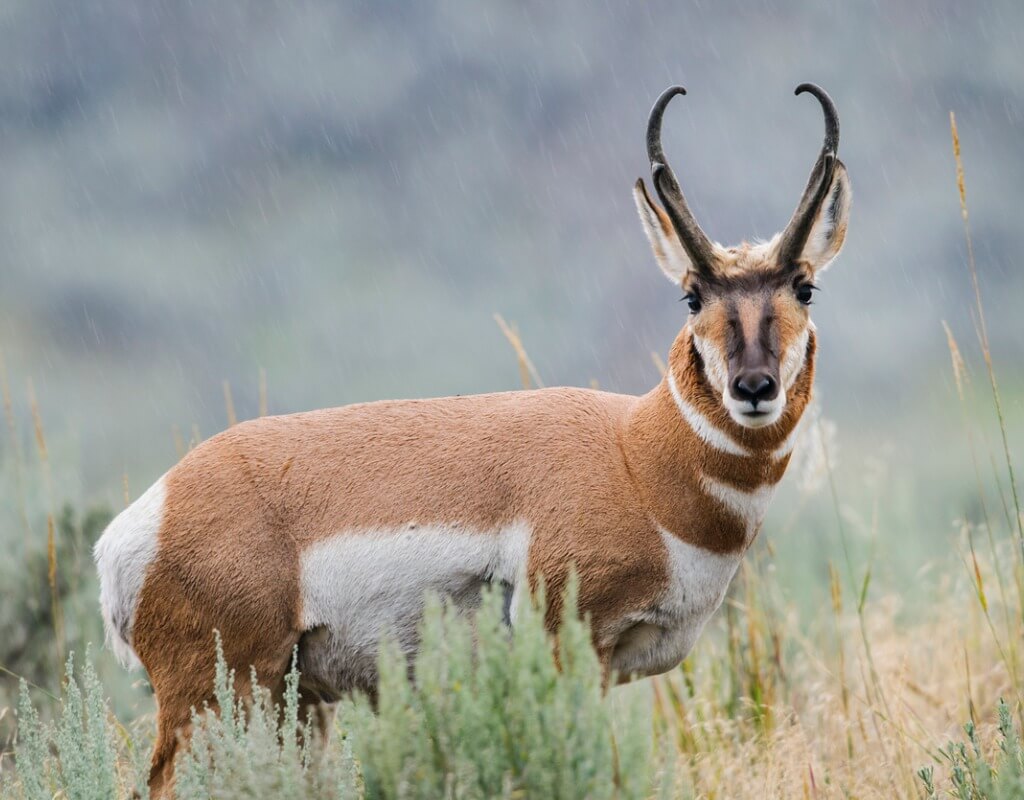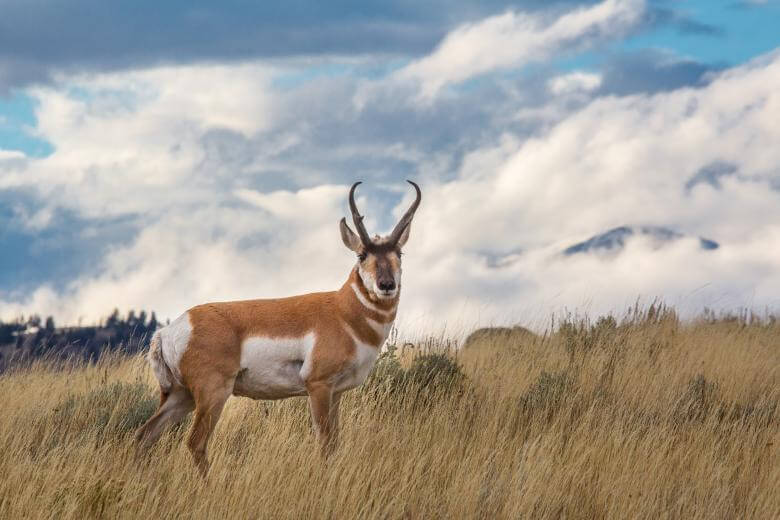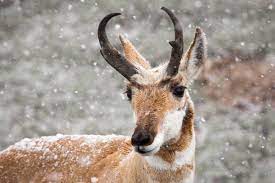7 Curiosities About the Pronghorn

The pronghorn is a peculiar animal that is only found in America. In fact, due to its strong resemblance to antelopes, it’s also called the American antelope. However, contrary to what one might think, it bears no relation to this species. Even though it’s quite well known, the pronghorn has several curiosities we’d like to tell you about!
The scientific name of the species is Antilocapra americana. It’s the only living representative of the Antilocapridae family, although its lineage is subdivided according to its distribution. Continue reading to discover more curiosities about the pronghorn.
What does the pronghorn look like?
The pronghorn is a quadrupedal animal that has a certain physical similarity to antelopes. Its body is slender, measuring about 1.4 meters long (4.6 feet) and between 70 and 80 centimeters (2.3 to 2.6 feet) tall. In addition, it has black antlers that are no more than 45 centimeters (1.5 feet) in length.
As for its coloration, the dorsal region exhibits brownish tones, while the belly is a light color. However, both its rump and neck have several light areas interspersed with brown. Likewise, the face has darker fur on the nose that extends to the horns, so that at first glance it appears to form a “Y”.

Little-known facts about the pronghorn
Although the pronghorn is a well-known species in America, there are several curious facts about it that people might not know. Some of the most interesting are as follows.
1. It’s the fastest hoofed animal in existence
The pronghorn is capable of speeds of up to 93 kilometers per hour (58 mph), far outpacing several cloven-hoofed animals and even other predators. In fact, this is one of the reasons they’re rarely killed by a carnivore.
2. Both sexes have horns
Contrary to other animals with antlers, both the males and the females of this species have the typical curved horns. However, the lineage has a marked sexual dimorphism, so males usually have larger antlers than females.
3. The horns of males have two branches
The pronghorn exhibits beautiful, backward-curved black antlers that distinguish the species. However, males differ from females in that their horns have a slight branching, which is observed as if it were an extra pointed horn. This feature could be useful during courtship fights.
4. It’s a ruminant
Although they aren’t directly related to bovids (buffaloes, antelopes, sheep, and goats), they share their way of feeding through rumination. This means that in order to digest their food (grass) properly, they regurgitate part of the food they swallow and then chew it again to release all its nutrients.
5. They have a long gestation
One of the most intriguing curiosities of the pronghorn is its long gestation process. On average, female pronghorn pregnancy lasts between 245 and 255 days, which classifies them as one of the ruminants with the longest gestation period of all.
6. They bristle their hair as a warning sign
Like other fur-bearing animals, pronghorns have a piloerection system in their fur. Because of this, when they’re in danger, their hair bristles and creates a type of plume that serves as a visible warning to their enemies.
7. Calves have a higher mortality rate
Pronghorn calves are unable to move for at least two hours after birth. In fact, even when they’re able to move on their own, they can’t reach the speed of adults. This is the reason why predators tend to focus more on the young, which increases their mortality rate.

As you have seen, the pronghorn is a peculiar animal with many curiosities. Moreover, due to its importance and the threats that exist for the species, it’s currently protected by several legislations in both the United States and Mexico.
All cited sources were thoroughly reviewed by our team to ensure their quality, reliability, currency, and validity. The bibliography of this article was considered reliable and of academic or scientific accuracy.
- Bromley, P. T. (1967). Pregnancy birth behavioral development of the fawn and territoriality in the pronghorn (Antilocapra americana Ord) on the National Bison Range Moiese Montana.
- O’Gara, B. W. (1990). The pronghorn (Antilocapra americana). In Horns, pronghorns, and antlers (pp. 231-264). Springer, New York, NY.
- Hildebrand, M., & Hurley, J. P. (1985). Energy of the oscillating legs of a fast‐moving cheetah, pronghorn, jackrabbit, and elephant. Journal of morphology, 184(1), 23-31.
- Krejci, K. & T. Dewey. (2009). “Antilocapra americana” (On-line), Animal Diversity Web. Recuperado el 12 de noviembre de 2022, disponible en: https://animaldiversity.org/accounts/Antilocapra_americana/
